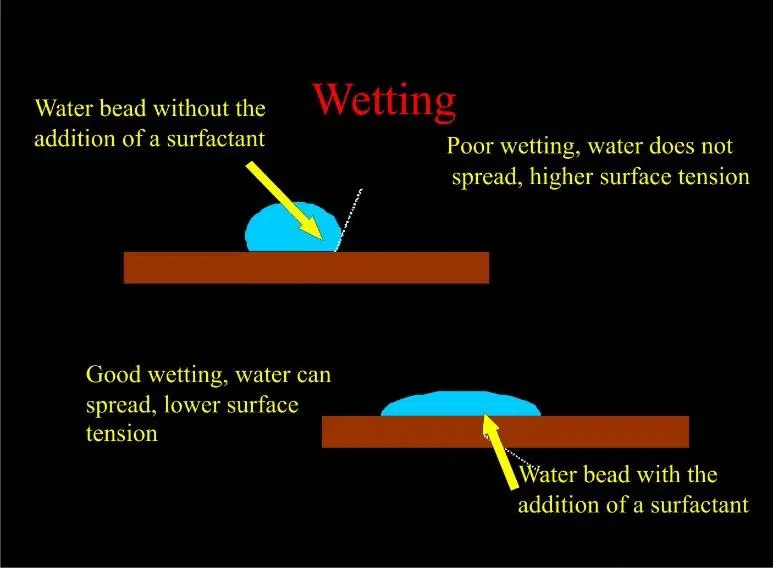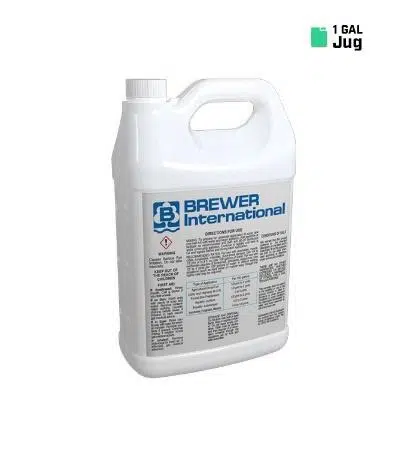Chances are you are reading this article because you have a weed or brush problem that you want to control, and you are looking for a superior adjuvant that will give you the best result. Selecting the right adjuvant to add to your herbicide is a critical step that allows you to optimize control of the weed or brush plants you are targeting, with little to impact on non targets or the environment, and at least cost.
Before we talk about the benefits of using Silnet 200, first let’s clear some hurdles:
- What is an adjuvant?
- An adjuvant is a chemical substance that is either added to a herbicide formulation or added to the spray tank to modify pesticidal activity or application characteristics.
- An adjuvant can be classified as a surfactant, a wetting agent, or an oil.
A surfactant:
- Or surface acting agent, is a class of adjuvant comprising chemical compounds that improve the emulsifying, dispersing, spreading, wetting, or other surface-modifying properties of liquids.
A wetting agent:
- Helps spread the herbicide solution more evenly over the leaf surface. By reducing the surface tension between the spray solution and the plant surface, wetting agents increase the ability of air or liquids to be displaced and for the leaf to be wet by the herbicide

An oil:
- Can increase the retention time of a spray solution on plant leaves, which allows for an increase in herbicide uptake. Other benefits of oils in herbicide spray mixtures include improved rainfastness, uniform droplet size, reduced drift, less spray evaporation, and better penetration of herbicide into waxy leaves.
- Are all adjuvants the same?
Adjuvants can be divided into three broad categories: activators, spray modifiers, or utility modifiers.
Activator adjuvants:
- Increase the biological activity of the herbicide beyond that usually obtained without the material added. The benefit of using activator adjuvants is increased spread of the spray solution on the plant surface that results in increased herbicide retention, absorption, and activity.
Spray modifiers:
- Are adjuvants that modify the spray solution in the tank on the way to the target or on the target itself. Spray modifiers include, spreaders, stickers, foaming agents, and thickening agents.
Utility modifiers:
- Are adjuvants that widen the range of conditions under which a given pesticide formulation is useful. Utility modifiers include antifoam, compatibility, buffering, and water conditioning agents.
- What is a nonionic surfactant?
- Nonionic surfactants are the most commonly used surfactant in agriculture. Nonionic surfactants produce little or no ionization in water, i.e., no electrical charge, and can be mixed with any herbicide.
- Two types of nonionic surfactants are silicone and organosilicone. Both types of nonionic surfactants decrease surface tension, but organosilicone nonionic surfactants are more efficient at spreading the herbicide spray solution on leaf surfaces.
- More about organosilicone surfactants:
- They were developed for water-based herbicide applications in agriculture, horticulture, industrial vegetation management, turf, and forestry applications.
- They dramatically reduce surface tension of the spray droplet to allow thorough penetration and maximum wetting and spreading properties on nearly all plant surfaces.
- They can be used with most pesticide and fertilizer products.
- They are also recommended for use with non-selective herbicides, desiccants, and defoliants.
How do you control weeds and brush plants?
Now that we have covered the basics of adjuvants that will help you select the best product for your situation, let’s now examine some of the facts related to the weedy or brush plant problem you wish to control.
Herbicides used judiciously provide the most efficient way to maintain the population of weeds and brush at levels that do not compromise habitat stability. Herbicides on the market today are generally classified by their formulation, mode of action, and site of action.
The challenge is in selecting the right herbicide that will control your weed or brush problem and applying it without harming desirable species, the environment, or yourself. When you do this step correctly, you will have taken the upper hand in managing your weed or brush problem.
Optimizing weed and/or brush management using herbicide.
- First, you need to select the best technique to use to ensure you get the best delivery of the herbicide and maximum herbicidal activity and control.
- Second, you need to select the best herbicide for this purpose.
- Third, you need to select the best surfactant and/or adjuvant to maximize herbicide efficacy for your weed or brush problem.
Here are some guidelines for controlling weed or brush plant species.
- Species identification: Identify the weed or brush plant species present in the habitat in which you desire to manage the problem plants.
Understanding the biology and ecology of the identified weed or brush plant species: You need to know the enemy before you strike. Therefore, useful weed biology and ecology information that can help identify vulnerabilities of the weed and brush plant species includes, life cycle characteristics, emergence timing, leaf characteristics, developmental stages, and reproduction. There are numerous easily available resources for the majority of weed and brush plant species known to cause problems in a variety of habitats.
- Selecting the appropriate herbicide(s): Your habitat is likely going to be populated with a variety of species, many of which are good species. Under these circumstances, you will want to select a herbicide that specifically targets the plans you want to control and is relatively safe on non-targets.
Remember: Read the product label to ensure that the herbicide you select is safe to use in habitat that is infested with weedy or brush plants targeted for control.
- Selecting the appropriate adjuvant(s): When applying postemergence herbicides, adding an adjuvant to your spray mixture can enhance the activity of the herbicide and/or modify its physical properties.
Product Highlight
Silnet 200
Now that we’ve covered the basics of spray adjuvants with particular attention to surfactants, and the basics of weed and brush control, let’s discuss how Brewer’s Silnet 200 nonionic surfactant is used in application. Silnet 200 is commonly used cross the United States in aquatics, fishery, agriculture, utility rights-of-way, forestry, and industrial spraying, and is one of Brewer International’s most widely used adjuvants.
What makes Silnet 200 a superior nonionic surfactant?
- Silnet 200 is made from a proprietary blend of nonionic chemicals.
- Silnet 200 is an excellent organosilicone surfactant that combines wetting with penetration of leaf surfaces.
- Silnet 200 can be applied with herbicides in wide variety of industries, including agriculture, citrus, turf, utility rights of way, and aquatic (surface and submerged).
- Silnet 200 can be applied with a wide variety of pesticide products, including insecticides, fungicides, and miticides.
- In addition to using Silnet 200 to improve control efficacy, you may need to use additional adjuvants to confront some commonly encountered problems associated with pesticide spray applications. For example:
- If you think your water source might compromise herbicide activity you will need to include a water-conditioning agent like Brewer’s Water Conditioner. The benefits of using Brewer’s Water Conditioner include, buffering the pH of the water, chelating iron, sequestering hard minerals like calcium and magnesium salts, and promoting wetting of foliage and uptake of herbicide.
- If environmental conditions may cause spray to go off-target and cause unintended damage elsewhere, consider using a drift control adjuvant like Brewer’s Poly Control 2. The benefits of using Brewer’s Poly Control 2 adjuvant include, increasing spray droplet size which increases herbicide reaching the intended target, and enhancing the retention of spray droplets on intended target.
- If you anticipate the development of foam in the spray tank that might compromise herbicide efficacy, use a defoaming adjuvant like Brewer’s Defoamer. The benefits of using Brewer’s Defoamer adjuvant include preventing foam buildup within the spray tank and reducing the potential for the development of foam during spraying to provide uniform delivery of herbicide to the target.

Read the Label
Make sure you read the pesticide label and follow all recommended instructions of all products you use to get the best weed or brush control.
In use for several decades, Silnet 200 is used by several applicators across the country and in a variety of ways. Brewer International customers trust our dedication to quality ingredients, tried and true formulas, and positive outcomes.

